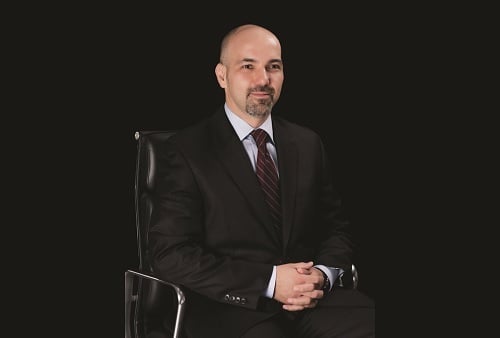

In 2018, the US market witnessed an average of almost six recalls per day involving ingestible and topical products, according to data from the Food & Drug Administration (FDA) and the US Department of Agriculture (USDA). Of those recalls, over 90% were classified by the FDA or the USDA as either class 1 (urgent threat level) or class 2 (intermediate threat level).
While the total number of product recalls in 2018 was below the average for the prior four years, the complexity of the recalls has trended upwards. According to FDA and USDA data, more than 20% of 2018 recalls were still ongoing as of the end of April 2019. This shows that performing a recall and dealing with its sideline implications can take a significant amount of time. In addition, the financial losses stemming from a contamination event can be devastating, making insurance a vital risk transfer mechanism.
Advances in science have had a major impact on product recall activity, according to Nicky Alexandru (pictured), senior vice president, US head of crisis management at Aspen Insurance. Pathogen detection methods, such as Whole Genome Testing (WGS), have significantly improved and more tests are being performed at every level of the supply chain to allow stakeholders to connect the dots and identify the source of a pathogen contamination.
“Liability in the supply chain has been one of the toughest challenges for insureds and carriers alike,” Alexandru told Insurance Business. “It’s widely believed that a product contamination can be traced to its source and that the cost of the recall can be ultimately recovered from the company that caused the contamination.
“Despite technology improvements, it’s not always possible to find the smoking gun. Some contaminations are detected long after the product was made, production lines cleaned, and ingredients comingled and used in the manufacturing process. Going back and figuring out exactly what went wrong is not always possible. The buck stops somewhere along the supply chain, just not always at the contamination source.”
Alexandru gave the example of a cookie factory that buys flour from two suppliers, which it then mixes together in a big silo to make the cookies. Three weeks later, a consumer finds something wrong with one of the cookies and the product is recalled. Investigators can look at who distributed the cookies and they can look at who produced the cookies (the factory), but they can’t go any further than that because the flour from all six suppliers was mixed together during the production process. The cookie factory might not be at fault for the faulty ingredient, but the buck stops with them regardless.
As evidenced in the recent Starr Surplus Lines Insurance Company vs. Mountaire Farms Inc. case, there also can be disagreement as to whether the presence of a naturally occurring pathogen in a product represents a contamination. In this case, a manufacturer made a product using raw chicken purchased from Mountaire Farms. The chicken was found to have salmonella, which was passed on to the finished product, which was subsequently recalled. Starr insured the manufacturer and paid a recall loss, and then took Mountaire Farms to court to try and recover the money because the product contamination started from the raw chicken ingredient. The court decided that salmonella naturally occurs in chicken and, therefore, it should be expected and there’s no recourse.
“Even when the contamination source can be identified, the company behind it may turn out to be unable to pay the damages,” Alexandru added. “Companies that sell basic products such as spices, flour, sugar, flavors, peanut butter, dry milk, nuts, etc. can trigger third party product recalls that are exponentially more expensive than their own product. Some of these companies may not have the financial strength and/or sufficient insurance coverage to respond to the claims of their customers. If the supplier happens to be a foreign company, pursuing damages in a foreign jurisdiction adds an additional layer of complication. Last, but not least, general liability (GL) is not always the failsafe solution it is believed to be. GL policies have exclusions (e.g. pollution and impaired property) that may come in play in a recall situation. Sometimes third property damage is hard to prove if a false positive or adverse publicity event triggers the recall.”
Underinsurance is widespread when it comes to product recall, according to Alexandru. This is partly due to limited understanding of the insurance product. Although widely known as ‘recall insurance,’ this insurance product offers much broader coverage than the name suggests. As Alexandru pointed out: “Recall is only one of the potential consequences of a contamination. It’s the easiest one to picture, hence the first one to be considered, but it’s inherently limiting.”
Virtually all contaminations cause manufacturing disruption until the root cause is identified and remedied. This is not always a simple job and it may bring production to a standstill for months. The loss of customer confidence, whether it’s a drop in retail sales and/or contract cancellations, can threaten the survival of any company. Similar to a property policy, the most important coverage of a recall policy may turn out to be the business interruption section. For companies with revenues under $1 billion, losses that reach 10% to 15% of their annual sales have become increasingly common.
